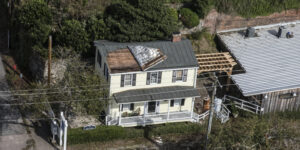Reinsurers have boosted their 2022 probable maximum loss (PML) exposures as higher prices continues to attract more capital to property-catastrophe risks, according to Moody’s Investors Service.
Reinsurers’ public disclosures of their Jan. 1, 2022, modeled PML exposures highlight increased capital deployment toward property-catastrophe reinsurance as pricing increases continue after several years of above-average insured catastrophe losses, said Moody’s in a report titled “Catastrophe PML disclosures show greater risk appetites as pricing moves higher,” which was published on March 30.
And those pricing increases are likely to continue, the report indicated.
“Upcoming renewal periods likely to be strong as several factors favor price increases,” Moody’s said, referring to the April and June/July renewals in Florida.
Property-catastrophe reinsurance pricing is likely to continue to rise as a result of a group of pressures, including:
- Weak sector profitability in recent years from above-average catastrophe losses
- Inflationary pressures
- A focus on the impact of climate change on catastrophe event frequency
- Strong demand from ceding companies
- Tight supply conditions in the collateralized retrocessional market
Divergence of Risk Appetites
The report noted that there is a divergence in the risk appetites between U.S. and Bermudan reinsurers and European-based reinsurers, despite the fact that the weighted average sector catastrophe exposures are moving higher across four of the five peak-zone catastrophe perils. (The five peak cat zones are U.S. wind, U.S. earthquake, Japan wind, Japan earthquake and European wind.)
“Since 2011, there has been a general trend of U.S./Bermuda companies cutting back on their U.S. wind exposure as a percentage of capital, while the large European firms have increased them,” Moody’s noted.
“The large European reinsurers continue to deploy increasing amounts of capital to property-catastrophe risk as pricing has improved, while the U.S./Bermuda firms have taken a more measured approach in recent years,” the report continued.
For example, large European reinsurers reported a significant increase in U.S. wind—the most capital-intensive risk zone—but at the same time, U.S./Bermuda firms were roughly flat overall. Moody’s noted that reductions at AXIS Capital and Everest Re offset increases at Lancashire Group and PartnerRe.
The decision by many U.S. and Bermuda reinsurers to reduce their risk profile results from a number of factors, some of which are firm-specific, said Moody’s, citing the example of Arch Capital, which has significantly reduced its natural catastrophe PMLs in recent years as its exposure to mortgage credit risk has grown.
Other firms, such as Everest Re and AXIS Capital, also have decided to significantly shrink their net catastrophe exposures to reduce earnings volatility, through both direct exposures and the increased use of retrocessional reinsurance, “some of which is sourced from affiliated sidecar vehicles,” the report said.
By contrast, large European reinsurers continue to deploy increasing amounts of capital to catastrophe risk as premium prices move higher, Moody’s affirmed. “For these firms, their larger scale and excellent geographic and product diversification provides an ability to increase capital allocations to catastrophe risk without placing undue pressure on their overall credit profiles.”
Moody’s said PML disclosures provide a window into reinsurers’ capital allocation and risk management priorities that leadership teams are pursuing.
“For the firms that provide transparent catastrophe risk exposure data, these disclosures are typically occurrence-based (single event) pretax, net of reinsurance/retrocessions, and include both windstorm and earthquake exposures in the U.S. and Japan, as well as windstorm exposures in Europe.”
Moody’s explained that reinsurers’ PML disclosures are not directly comparable across companies because of the use of different models and assumptions, but they can provide directional signaling into each firm’s risk appetite and capital allocation strategy.
Source: Moody’s Investors Service





















 The Future of Knowledge in Insurance: From Training to AI-Powered Productivity
The Future of Knowledge in Insurance: From Training to AI-Powered Productivity  How One MGU Grew Fivefold When Capacity Fled Cat-Prone Property Markets
How One MGU Grew Fivefold When Capacity Fled Cat-Prone Property Markets  Litigation Finance Hits a Wall After Bets on Huge Gains Falter
Litigation Finance Hits a Wall After Bets on Huge Gains Falter  Texas ID Restrictions Could Prevent Illegal Immigrants in U.S. From Buying, Registering Vehicles
Texas ID Restrictions Could Prevent Illegal Immigrants in U.S. From Buying, Registering Vehicles 




